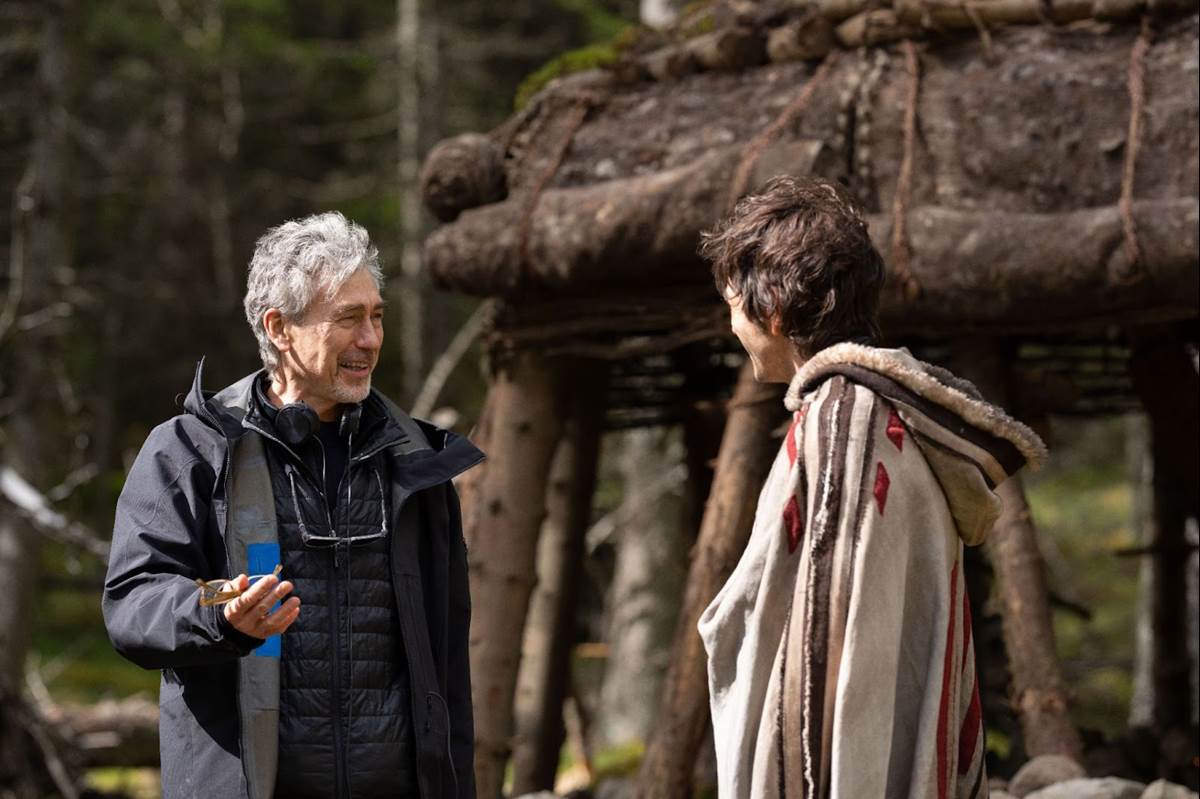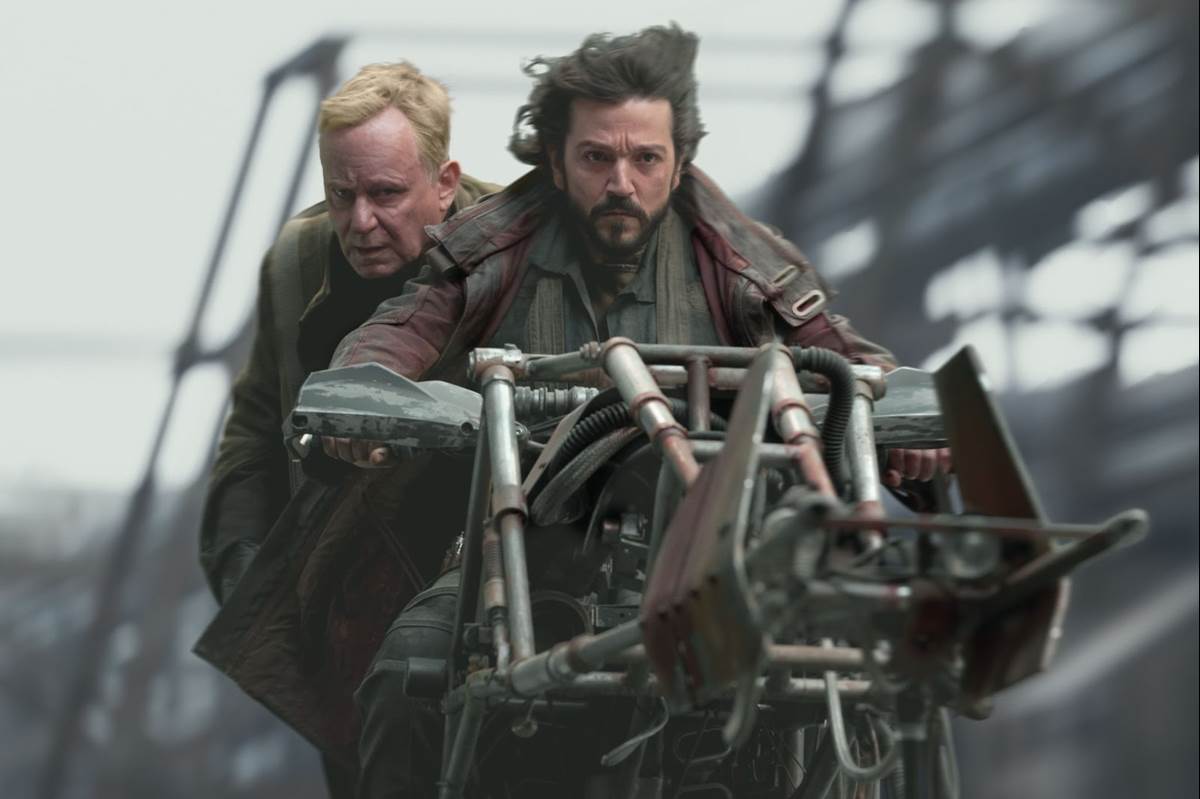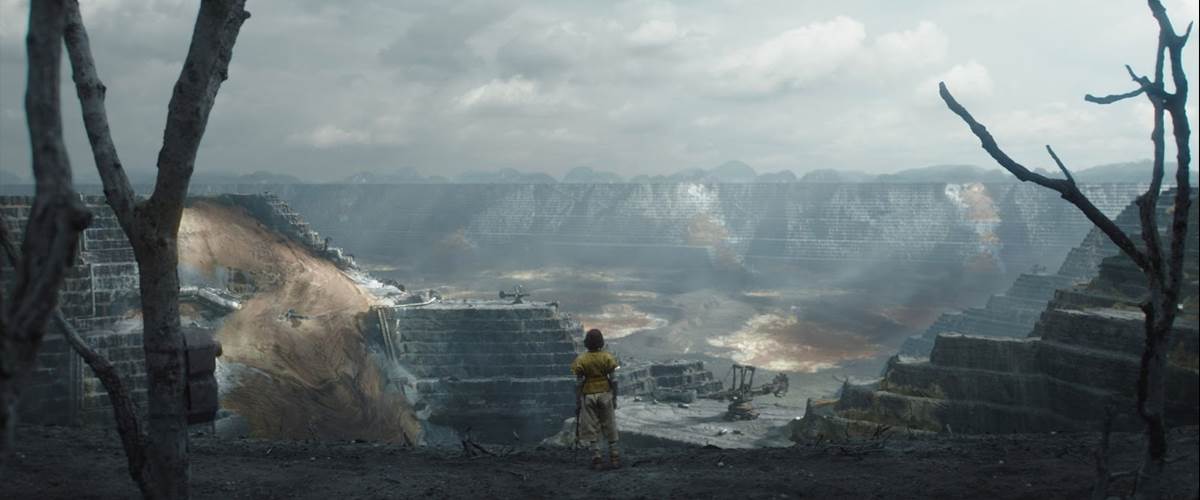Filmmaker Tony Gilroy got his start as a screenwriter in the early 1990s, penning such movies as The Cutting Edge, Dolores Claiborne, and The Devil’s Advocate. He also wrote four films in The Bourne Identity franchise and directed 2012’s The Bourne Legacy. Then in 2016 he was famously brought in as a script doctor and director of reshoots for Lucasfilm’s prequel Rogue One: A Star Wars Story.
Now Gilroy is serving as creator, executive producer, and showrunner of the new live-action Rogue One spinoff series Star Wars: Andor, which premieres on Disney+ next month. Recently he participated in a virtual press conference to discuss his involvement in the show and his strategy for delivering a compelling Star Wars drama on the small screen.
To start off, Tony Gilroy spelled out the basic concept of Star Wars: Andor. “I think the main idea is we have a character in Rogue One, and we know where he ends up, and we know how accomplished and complicated he is. The idea that we can do a story that takes him literally from his childhood origins and walk him through a five-year history of an odyssey that takes him to that place, during a revolution, during a moment in history in a place where huge events are happening and real people are being crushed by it– the fact that we could follow somebody as an example of a revolution all the way through to the end, that was the walk-in for me. That was the buy-in: the opportunity to do that and to center our story around that.” But Gilroy wanted to emphasize that there are more characters in Andor than just the one named in the series’ title. “There are a lot of characters in our show, but everyone is going to be circulating and spinning and intersecting around the Cassian Andor story as we move towards Rogue One.”
Gilroy talked more about the time period in which Andor is set, five years before the events of the original Star Wars trilogy. “It's a potent moment in history, and a lot of people are facing a lot of really difficult times and difficult decisions along the way. That's what the show is about: the opportunity to do that on a large scale, on a big canvas. That's why I'm here.” But he also credits Star Wars fans for making the series a reality. “The show exists because there's an enormous, arterial, important, passionate Star Wars community. And I know it's not a monolithic community– there's many different versions and factions within it– but there's this huge dedicated Star Wars community that shows up. That's our whole card. That's what gave us the money and the momentum and the ability to make a show that's this insanely big, this abundant, and this difficult to make. That audience is our primary concern, and we want to bring something to them that is a completely different lane than what they've had before, but we're doing it in a completely uncynical fashion.”
“There's nothing cynical about our show. The word we use more every day, and I was at Pinewood [Studios] today prepping for [season] two, is ‘real.’ We want to make this real. This place is real to us. We will bring a lot of things to [the fan] community that we hope they're really interested in, and we hope they really appreciate the passion that we've tried to make it real. At the same time, it's no secret: [there are] a lot of people that are Star Wars adjacent or Star Wars averse, and [they] should be able to watch our show [as well]. Our show is designed that this could be your entry point to Star Wars. You could watch our 24 episodes [and] that could be your way in. We're doing a show that does not require any prior knowledge whatsoever to get involved. That's the gamble: can we satisfy and electrify and excite the dedicated fans, and can we at the same time bring something that's so intense emotionally and seems so true and is the smallest domestic drama and the smallest interpersonal relationships that are dropped down in the midst of the epic tectonic revolutionary historical moments where people have to make huge decisions? Can we attract another audience that's interested in that as well? Can we marry those two things together? That's the gamble. That's what we're trying to do and that's why we're here.”
Next, Tony Gilroy was asked about the real-world inspirations for the locations introduced in Andor. "Just life. I mean, I grew up in upstate New York; itt was kind of a blue-collar place and everybody always had jobs. When you were twelve, you went out and got working papers. It was an odd thing. I worked for masons, I was a plumber’s apprentice, and ran a painting company– all kinds of jobs, you know? [The planet Ferrix] is an idealized fantasy of mine, I suppose, of a community that’s been stable and benevolent and thriving. We don't really have any economic diversity there, really. It's my utopian mechanical-side fantasy of a place that really functions taking things apart and putting them back together again. Our production designer Luke Hull, who did Chernobyl, he really is in the brain trust that puts the show together with the core group of people that [helped]. Luke is just Mozart– he's a young production designer, and he's just soaring. They built an eight-and-a-half-acre city for us that we will use for all twelve episodes. It's a 360[-degree] set. The community that we were allowed to build within it and the social structures and the rituals of it, because there are some really intense rituals about it, it really feels like a place. You get to play god. We built a place, we built a whole culture, we built a whole life, we built a whole tradition, we had people care about it. It's a fantastic maximal expression of imagination to be able to do this. It’s just fantastic to be able to do it. It's thrilling.”
Star Wars: Andor premieres with its first three episodes on Wednesday, September 21, exclusively via Disney+.




